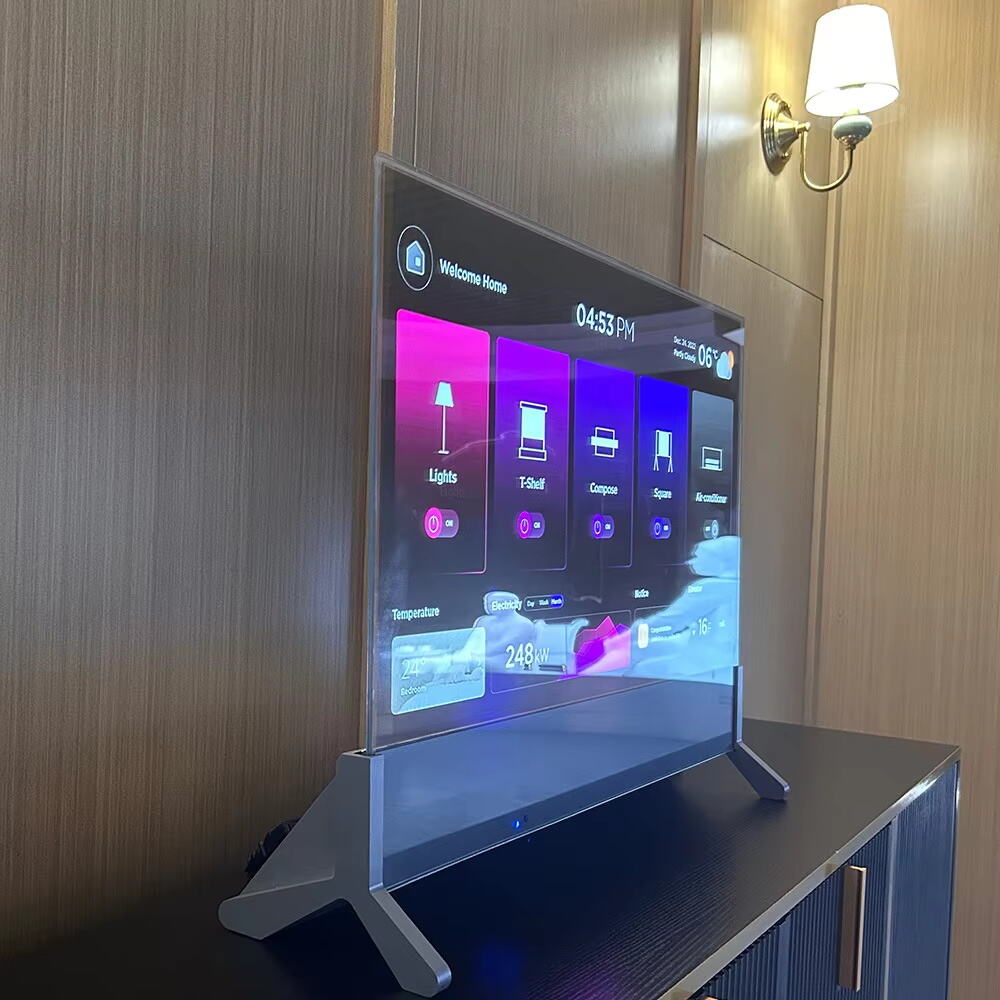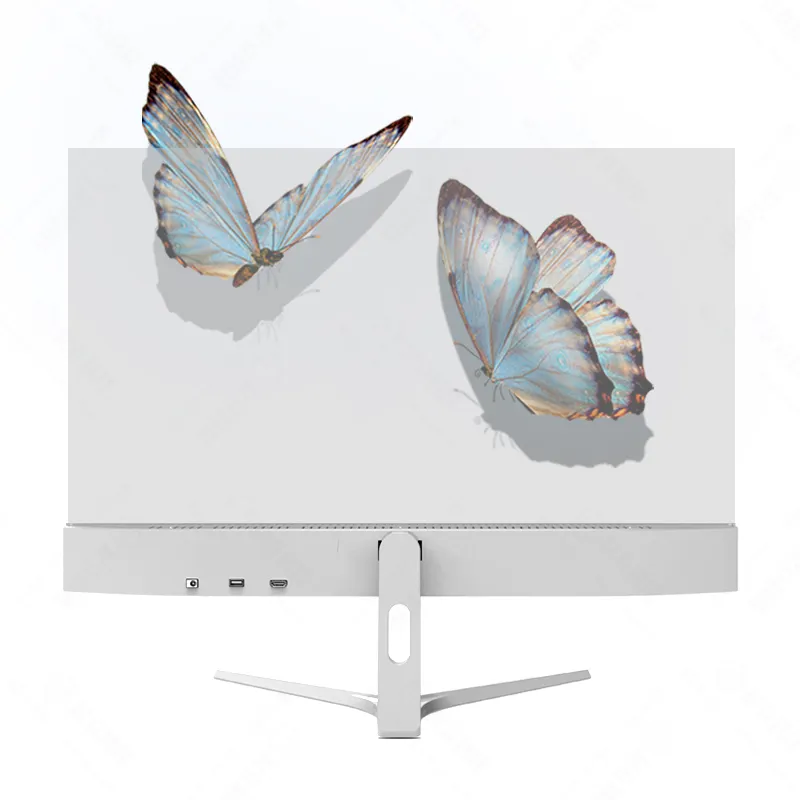A strategic overlay for smarter spaces
Transparent OLED Display technology creates new possibilities for how environments communicate, interact, and adapt. In smart buildings, retail spaces, transportation hubs, and connected homes, a Transparent OLED Display merges digital content with the physical world, allowing information to float above objects, appear on glass, and enhance situational awareness without obscuring sightlines. This hybrid quality makes the Transparent OLED Display particularly valuable where context matters—showing data about the thing you are looking at, adding subtle notifications to a window, or converting a storefront into an interactive canvas while preserving the view of products behind the glass. As smart environments become more ambient and networked, the Transparent OLED Display serves as a design-forward interface that both augments and integrates with sensors, control systems, and voice assistants to deliver relevant content when and where it’s most useful.
Architectural integration and building façades
Retail façades that blend product and promotion
A Transparent OLED Display turns a storefront window into a dual-purpose surface where passersby see products and dynamic messaging simultaneously. When integrated with inventory and point-of-sale systems, the Transparent OLED Display updates promotions in real time and highlights in-store stock without covering the merchandise, creating a seamless link between digital marketing and physical availability.
Smart glass partitions and workplace transparency
In office settings, a Transparent OLED Display can transform glass partitions into collaboration panels that show schedules, video calls, or contextual data while maintaining visual openness. Instead of opaque screens that block lines of sight, a Transparent OLED Display preserves daylight and sightlines, helping teams stay connected without losing the spatial benefits of glass architecture.

Retail and merchandising enhancements
Product visualization and interactive demos
Retailers use a Transparent OLED Display to overlay specifications, pop-up videos, and AR-style illustrations directly over displayed items. A shopper can view a garment and see fabric information or a watch with animated feature callouts on the same pane. The Transparent OLED Display supports richer storytelling at the point of decision, increasing relevance and reducing reliance on separate screens or printed tags.
Inventory-driven dynamic showcases
When linked to inventory feeds, the Transparent OLED Display becomes a real-time merchandising tool. Limited stock can be highlighted, low-stock items may trigger urgency messaging, and new arrivals can cycle in as soon as they are scanned into the system. This data-driven display behavior improves the shopper experience and supports omnichannel operations.
Museums, galleries, and interpretive spaces
Layered interpretation without object obstruction
Cultural venues deploy a Transparent OLED Display to layer historical context, translations, and multimedia narratives above exhibits while keeping artifacts visible. Visitors access additional media and annotations without intrusive placards, enabling a quieter, more interpretive experience. The Transparent OLED Display’s ability to fade to clear when not active keeps the focus on the object itself.
Interactive curation and visitor-driven storytelling
Curators can use the Transparent OLED Display to create branching narratives where visitor choices determine content depth. Sensors or mobile apps trigger relevant overlays on a Transparent OLED Display, personalizing the museum visit and encouraging deeper engagement with the collection.
Transportation and mobility applications
Heads-up signage and passenger information systems
In airports and transit stations, a Transparent OLED Display serves as a heads-up panel that overlays schedules, wayfinding arrows, or safety messages onto existing glass dividers and windows. The transparent nature keeps sightlines to platforms and gates open while ensuring that passengers receive timely, contextual information.
Vehicle integration and cockpit augmentation
Automotive and rail designers experiment with transparent cabin displays where a Transparent OLED Display overlays navigation and system status on glass while preserving driver or passenger visibility. This approach reduces dashboard clutter and enables situationally relevant content to appear only when needed.
Hospitality and restaurant experiences
Menu augmentation and contactless ordering
Restaurants integrate Transparent OLED Display panels into partitions or windows to show rotating menus, ingredient provenance, and dietary filters while guests view the dining room or street. The Transparent OLED Display supports contactless ordering workflows and adds a premium, futuristic feel to the dining experience.
Event-ready environments and mood control
Hotels and venues use Transparent OLED Display surfaces in lobbies and bars to change ambiance, show event details, or create privacy screens that keep the space open visually. The ability to switch between full transparency and vivid imagery makes the Transparent OLED Display ideal for multipurpose spaces that host meetings by day and events by night.
Smart home and residential use
Intelligent glass for living spaces
Homeowners adopt Transparent OLED Display panels as intelligent glass doors, cabinetry fronts, or window overlays that show weather, calendars, or media while maintaining a view. The Transparent OLED Display scales elegantly from a small window to a full wall application, enabling embedded information without sacrificing design.
Mirror and vanity augmentation
A bathroom mirror with integrated Transparent OLED Display capabilities can present news briefings, lighting adjustments, and personal notifications while still functioning as a reflective surface. This subtle augmentation creates a personalized, hands-free interaction point blended into daily routines.
Healthcare and clinical settings
Sterile displays and patient-facing information
Clinics and hospitals leverage Transparent OLED Display panels within glass clinic partitions and operating-room observation windows to show patient status, treatment timelines, and procedural checklists without encroaching on sterile fields. The Transparent OLED Display improves situational awareness and supports quick data reviews without adding physical clutter.
Wayfinding and recovery-room engagement
Patient rooms or corridors with Transparent OLED Display elements can communicate visitation schedules, wayfinding, and calming content to ease patient stress. These displays maintain the open, comforting aesthetic of glass while delivering essential information.
Integration with sensors and IoT
Context-aware overlays driven by sensor data
A Transparent OLED Display becomes more powerful when connected to motion, proximity, and environmental sensors. For example, when someone approaches a product, the Transparent OLED Display can reveal more product details; when light levels fall, the display can adapt its brightness to remain readable without overpowering the scene. This sensor-driven behavior makes the Transparent OLED Display an intelligent surface in a broader smart ecosystem.
Edge computing for local responsiveness
Edge processors colocated with Transparent OLED Display panels handle rapid image rendering and sensor fusion, enabling low-latency responses for gestures, tracking, and AR overlays. Local compute reduces network dependency and ensures that the Transparent OLED Display reacts instantly in high-traffic contexts.
Design challenges and operational considerations
Balancing legibility with transparency needs
Designers must find the right mix of opacity, contrast, and brightness so content on a Transparent OLED Display is legible while preserving the view behind the panel. UI strategies such as semi-opaque backplates, adaptive contrast, and minimal typography help maintain readability without undermining transparency.
Deployment environments and maintenance planning
Because transparent panels can be more sensitive to ambient light and require careful mounting, planning for site-specific lighting, cleaning access, and thermal management is essential. Maintenance routines and monitoring systems extend the useful life of a Transparent OLED Display in public installations.
Future trajectories and complementary tech
Augmented reality convergence and spatial computing
As AR wearables and spatial mapping improve, the Transparent OLED Display will play a complementary role—anchoring AR content to real-world reference points visible to everyone. The synergy between personal AR and shared Transparent OLED Display overlays creates richer, multi-user smart environments.
Flexible form factors and active materials
Emerging work on bendable, larger-area Transparent OLED Display substrates promises new architectural use cases: curved retail aisles, column wraps, and sculptural installations that bring digital layers into the built environment in fluid form.
FAQ
Typical installation scenarios and best practices
Install Transparent OLED Display panels where sightlines and context enhance understanding—storefronts, museum cases, office partitions, and vehicle glazing. Ensure power, control wiring, and protective encapsulation are planned upfront to avoid retrofits that compromise performance.
Content strategy and UI recommendations for transparent panels
Use layered content, minimalist typography, and adaptive opacity to balance legibility and transparency. Test messaging under real ambient light and prioritize short, contextual interactions that add value to the viewer’s immediate task.
Maintenance and lifecycle considerations for transparent installations
Schedule regular cleaning, UV-exposure checks, and firmware updates. Monitor panel health via integrated diagnostics and plan for periodic recalibration of brightness and color balance to maintain consistent presentation over time.
Security and privacy measures for public Transparent OLED Display deployments
When displaying sensitive information, deploy authentication layers, session timeouts, and privacy modes that revert panels to transparency after use. Network security and local firewalls help protect content management systems that drive the Transparent OLED Display.
Table of Contents
- A strategic overlay for smarter spaces
- Architectural integration and building façades
- Retail and merchandising enhancements
- Museums, galleries, and interpretive spaces
- Transportation and mobility applications
- Hospitality and restaurant experiences
- Smart home and residential use
- Healthcare and clinical settings
- Integration with sensors and IoT
- Design challenges and operational considerations
- Future trajectories and complementary tech
- FAQ

